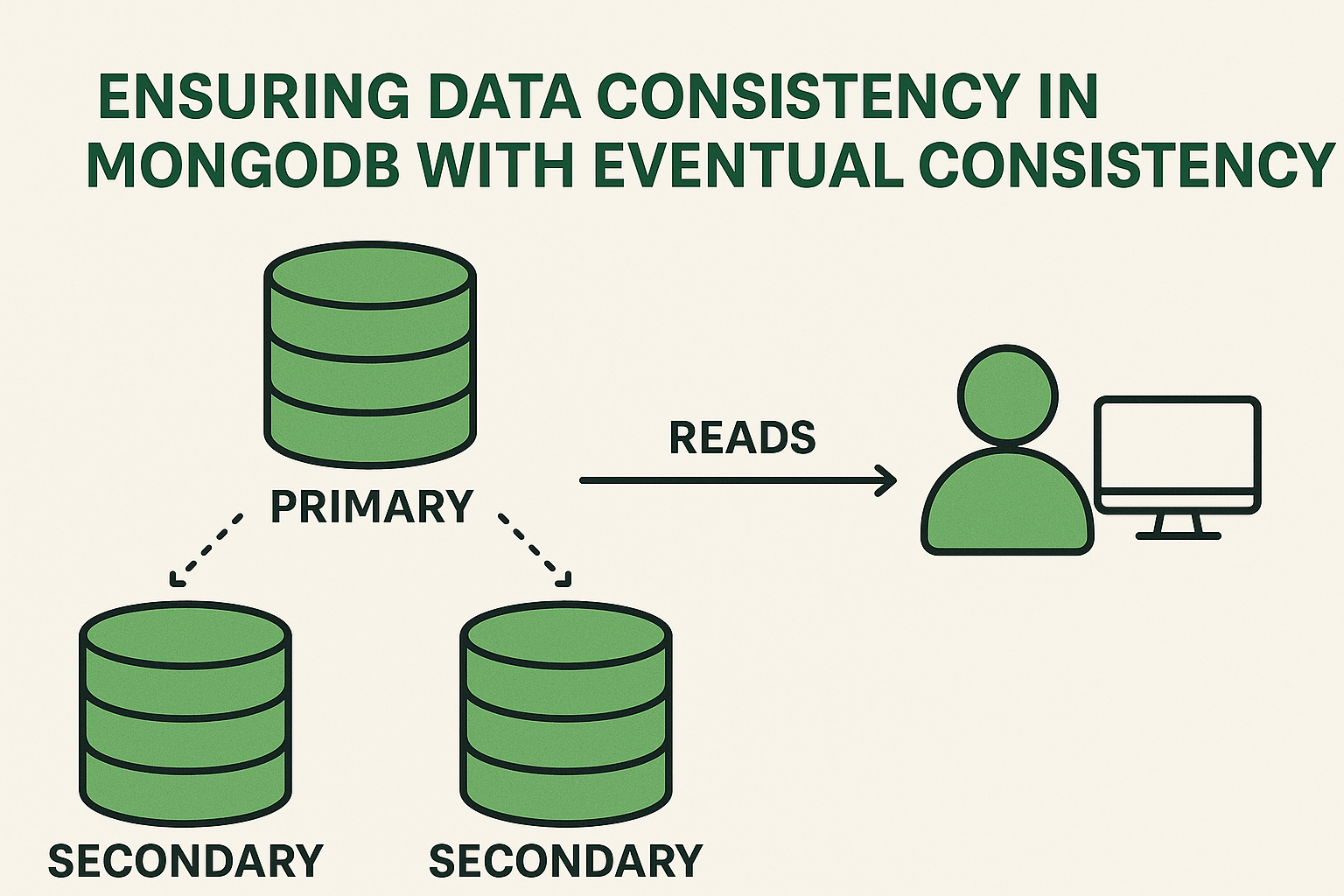MongoDB, one of the most widely adopted NoSQL databases, is known for its scalability, flexibility, and high availability. However, when operating in distributed environments—especially with replica sets and sharded clusters—MongoDB embraces the principle of eventual consistency. This means that while data may not always be immediately synchronized across nodes, it eventually reaches a consistent state.
For developers and architects, understanding eventual consistency is crucial to designing reliable applications that balance performance, fault tolerance, and data integrity.
What is Eventual Consistency?
Eventual consistency is a consistency model used in distributed databases. Unlike strong consistency (where every read returns the most recent write), eventual consistency guarantees that:
- Updates to data will propagate across all nodes over time.
- If no new updates are made, all nodes will eventually return the same data.
- During replication delays or network issues, some reads may return stale data.
In MongoDB, this trade-off enables higher performance and availability, but it also requires careful planning to avoid data anomalies.
How MongoDB Implements Eventual Consistency
- Replica Sets
- MongoDB uses replica sets to maintain multiple copies of data.
- One node acts as the primary (handling writes), while others are secondaries (replicating asynchronously).
- Reads can be directed to the primary (stronger consistency) or secondaries (faster reads but potential stale data).
- Read Concerns
- MongoDB provides configurable read concerns to balance consistency and performance:
- local – returns data from the node’s local copy (fast but may be stale).
- majority – returns only data acknowledged by the majority of replica set members.
- linearizable – guarantees strictest consistency but at higher latency.
- MongoDB provides configurable read concerns to balance consistency and performance:
- Write Concerns
- Write concerns let you control how MongoDB acknowledges writes:
- w:1 – acknowledged by primary only.
- w:majority – acknowledged only after replication to a majority of nodes.
- w:all – waits for replication to all nodes (slower but safer).
- Write concerns let you control how MongoDB acknowledges writes:
Challenges with Eventual Consistency
- Stale Reads: Applications reading from secondary nodes may get outdated data.
- Conflict Resolution: Concurrent updates in sharded environments may cause conflicts.
- Latency: Propagation delays can affect real-time applications like financial systems.
- User Experience Issues: End users may see outdated information if not handled properly.
Best Practices to Ensure Consistency in MongoDB
- Use Appropriate Read and Write Concerns
- For critical data (like payments, transactions), use
writeConcern: majorityandreadConcern: majority. - For less critical operations (like logging),
w:1orreadConcern: localmay suffice.
- For critical data (like payments, transactions), use
- Design Idempotent Operations
- Ensure that repeated writes don’t corrupt data (important in retries due to network failures).
- Implement Application-Level Checks
- Add versioning or timestamps to detect stale data in reads.
- Use optimistic concurrency control for conflict resolution.
- Leverage Transactions
- Since MongoDB 4.0, multi-document ACID transactions are supported.
- Transactions help maintain stronger consistency for critical operations.
- Tune Replication Lag
- Monitor and optimize replication lag using MongoDB Ops Manager or Atlas.
- Place secondary nodes strategically to minimize network delays.
Real-World Use Cases
- E-commerce platforms – Eventual consistency works well for catalog browsing, but checkout and payments require strong consistency.
- Social media apps – Likes, comments, and posts can tolerate slight delays, making eventual consistency ideal.
- Financial services – Stronger consistency models are mandatory for ledger updates and transactions.
Conclusion
Eventual consistency in MongoDB offers the perfect balance between availability and performance, but it comes with trade-offs. By using the right combination of read concerns, write concerns, and application-level safeguards, you can ensure data consistency that aligns with your business requirements.
When architected correctly, MongoDB’s eventual consistency model empowers applications to scale globally while maintaining reliability and trust.









